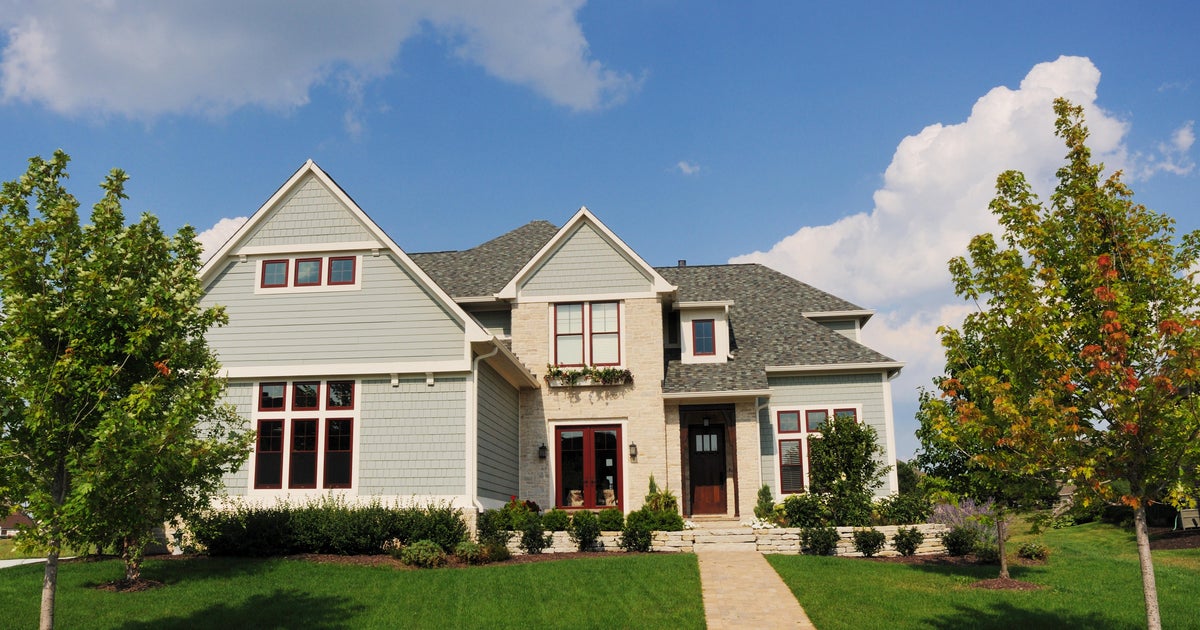Home listings surge as rising mortgage rates push some buyers to sidelines
New housing inventory grew rapidly in June as the recent spike in mortgage rates pushed some buyers to the sidelines. That's easing an acute supply shortage, but affordability continues to be a headache for house-hunters, given the combination of rising rates and record-high asking prices.
Active home listings grew at an annual rate of 18.7% in June compared to a year earlier — the fastest pace since 2017, according to a new report from Realtor.com. Because some buyers are getting priced out of the market, homes are sitting on the market for longer and easing the inventory crunch, it added.
During the pandemic, many Americans wanted either relocated or moved into bigger homes amid a shift to remote work, while new home construction trailed off due to labor and supply issues. Facing an inventory logjam, buyers competed with all-cash offers and waived contingencies to secure deals, driving housing prices to new records. Even as the inventory drought is now easing, prices — and mortgage rates — continue to creep upward.
"You had a perfect storm where demand was really high, supply was relatively tight and you saw the number of homes for sale drop, and prices go up as a result," said Realtor.com analyst Danielle Hale.
Still, housing inventory remains well below pre-pandemic levels. Active listings remain down 34.1% compared to June 2020, and 53.2% compared to June 2019.
"Over the last three years we have seen the number of homes for sale get smaller and smaller," Hale noted.
And mortgage rates have inched upward this year, averaging 5.7% for a 30-year fixed-rate loan as of June 30, according to Freddie Mac. By comparison, the 30-year mortgage was at about 3% a year earlier.
Sellers' median asking price jumped to a new record in June, reaching $450,000 — an increase of almost 17% from a year earlier.
More new households than houses
Dwindling inventory was driven by a surge in demand, with new households forming at a faster rate than homes being built. "Building and construction weren't keeping pace," Hale said.
At the beginning of 2022, there were 5.8 million more new households than there were single-family homes, according to Realtor.com.
That shortage was exacerbated by building constraints at the beginning of the pandemic, driven by labor shortages and challenges obtaining materials.
As a result, mortgage rates dropped to record lows, making it easier financially for buyers to purchase homes.
The good news is that the number of homes for sale is increasing, giving homebuyers more houses to choose from and sparking competition among sellers.
"When you have more supply and somewhat less demand, the housing market is rebalancing and that's why we are seeing the number of homes that are sitting on the market grow," Hale said.
"Tempered good news"
But home ownership still remains out of reach for many Americans, particularly as mortgage rates continue to rise, driving less-wealthy families to the sidelines.
The average rate on the popular 30-year fixed mortgage touched 6% earlier this month— the highest it has been since the 2008 recession.
"It's tempered good news," Hale said. "It is good for buyers who can keep their home search going despite obstacles, but for others it may mean some buyers are moving into the rental market instead of making a home purchase this year."
Cities with the most active new listings, include Austin, Texas; Charlotte, North Carolina; Dallas; Las Vegas; Nashville; Phoenix; Oklahoma City; Orlando, Florida; and Raleigh, North Carolina, according to Realtor.com.
Homeowners thinking about listing their properties need to be aware of the new competition in the housing market, and keep tabs on local pricing trends. "They need to make sure the asking price doesn't get too high, or too high ahead of the market," Hale said.
Buyers have more options than they did last year, but the market remains competitive. "They still want to put in strong offers in order to have best chance of success," Hale said. "But they should know they have more options than in the last year."



